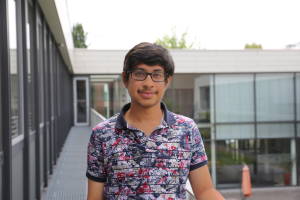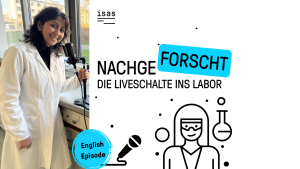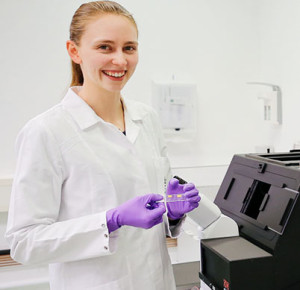Dortmund, 27th July 2022
Kshitij Sinha is a student intern in the Spatial Metabolomics junior research group headed by Dr Prasad Phapale. The 22-year-old is enrolled at the Indian Institute of Technology. In this interview, Sinha talks about how he wants to contribute to the development of effective drugs against tuberculosis. He also reveals how a tweet paved the way to his internship abroad.

Since May 2022, Kshitij Sinha has been working as a student intern in the Spatial Metabolomics junior research group at ISAS. His way from India Dortmund started with a tweet.
© ISAS
Kshitij, you are both an undergraduate and graduate student. How is that possible?
Sinha: I am doing a dual degree in biochemical engineering. My college is located in Varanasi, a city in the state of Uttar Pradesh in North India. After completing a five-year-program, I will receive a bachelor's as well as a master’s degree. I am now in my fourth year. Within my last year, which starts in August 2022, I am going to finish my master’s thesis on antimicrobial drug resistance in Mycobacterium tuberculosis.
Why did you chose tuberculosis as the research topic of your master’s thesis?
Sinha: According to the World Health Organization, ten million people fall ill with tuberculosis every year. Unfortunately, the bacterial species Mycobacterium tuberculosis can develop resistance to the drugs that are supposed to cure the disease. The result is a form of multidrug-resistant tuberculosis which is difficult to treat. That is why I want to contribute to the development of new, effective drugs against tuberculosis. Therefore, I try to figure out the structural biology and interaction of proteins that are involved in the development of tuberculosis. More precisely, I am looking at the FAS II pathway in the Mycobacterium tuberculosis. FAS-II stands for fatty acid synthase type II. This pathway carries out the biosynthesis of mycolic acids. These long-chain fatty acids form the outer layer of the microorganism that contains the causative agent of tuberculosis. My goal is to inhibit this pathway by identifying a binding molecule for the protein InhA that contributes to the formation of mycolic acids. This protein could be a target for future drugs.
How come you pursued an internship at ISAS’ Spatial Metabolomics group?
Sinha: Students in my college usually do a summer internship for some work experience. I was looking for an opportunity to gain research experience in life sciences and came across Dr Phapale’s Twitter account. In one of his tweets, he wrote that he was expanding his lab. That made me curious. When I read one of his research papers on pharmacometabolomics, I was hooked immediately. I then spontaneously emailed him and asked for an internship. To wrap things up: He agreed and I also applied for a DAAD (Deutscher Akademischer Austauschdienst) scholarship. The Working Internships in Science and Engineering (WISE) scholarship made obtaining a visa easy, and the funding is also helpful for my three month stay.
Prasad Phapale and his team are developing a multi-method approach that will allow the parallel analysis of metabolomics processes under spatial and temporal aspects. What are your tasks in his research group?
Sinha: My first task is to compare workflows of the metabolomics data analysis by using two software types: Compound Discoverer and Progenesis QI. Both are automated analysis software for small molecule data. The data sets I am using are metabolites which we have analysed by using liquid-chromatography mass spectrometry, short LC-MS. The computational process of analysing these LC-MS data consists of a few steps. Whereas Progenesis QI automates most steps with default parameters, Compound Discoverer allows the user to choose suitable parameters.
My second task is to identify metrics for the software comparison through literature search. As both have an adequate default workflow, one of them could be used as a reference standard when comparing other software in the future.
To what extent is your internship at ISAS helpful for your own research and further career?
Sinha: The research I do in the Spatial Metabolomics group is essential for my further studies. For example, I worked with various programming languages that I had not used before. From Dr Phapale and his team, I learnt a lot about data visualisation. That was completely new for me. In addition, this internship helps me decide what possible research area to choose for my PhD. Metabolomics, protein biochemistry or bioinformatics – I still have to figure out which one I want to focus on. After spending time in Dortmund, Germany also became an option for my doctorate. Since I got a first glimpse of how scientists work here, I really came to appreciate the research culture in Germany.
(The interview was conducted by Bettina Dirauf)








